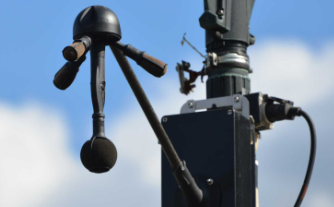Noise Cameras vs. Deafening Motorcycles

Introduction
Noise pollution is a progressively concerning environmental issue in cities. With its multiple causes, modified exhaust systems of motorcycles to deliberately contribute to a substantial source of loud noise. This is to explore the challenge, its impacts on the environment and public health, and assess possible solutions, principally the application of noise-detecting and recognition cameras
The Problem: Altered Motorcycles
-
What are Modified Motorcycles?
Motorcycles are usually equipped with silencers to reduce mechanical noise. Yet, various riders alter or remove this equipment for personal preferences, performance improvement, or visual reasons, leading to noise levels to go beyond lawful limits.
Standard Noise Levels:
-
Standard motorcycle: 80–90 decibels (dB)
-
Modified motorbike: 100–120 dB
(For indication: 85 dB is the threshold level for possible hearing loss over time.)
-
. Challenges Presented by Noisy Motorcycles
-
Health Impacts
• Hearing loss from prolonged exposure to noise above 85 dB.
• Sleep disturbances in residential neighbourhoods.
-
Sleep instability in residential neighbourhoods
-
Intensified stress, irritability, and anxiety
-
Damaging effects on kids’ concentration and education.
-
Ecological and Social Impacts
-
Disturb and Interrupts pets and wildlife
-
Reduces the quality of life in neighbourhoods and towns
-
Disturb the peace by increasing people’s complaints and tension between populations and riders.
-
Law Implementation Complications
-
Traditional patrolling is inconsistent and reactive (policing).
-
Noise abuses are difficult to verify, to have evidence or prove, and it should be on the spot in real-time.
-
Absence of extensive tools to inspect and impose noise restrictions
Solutions to the Modification of Motorbikes’ Exhausts
-
Legal Guidelines:
-
Several countries have established legislation that restricts motorcycle noise (characteristically around 80–94 dB)
-
Interdiction of the installation or the sale of aftermarket exhaust systems
-
Systematic inspections of the motorbikes for illegal modifications.
-
Public Campaign and Awareness:
-
Making sure that the riders are aware of the health and legal consequences
-
Inspiring Campaigns directed to the riders to respect the community by acknowledging noise levels
-
Benefits of Noise Cameras:
What Are Noise Cameras?
Noise cameras are innovative mechanisms that merge high-resolution cameras and microphones to:
-
Identify noise that goes beyond legal decibel restrictions
-
Determine the location of the noise
-
Mechanically take pictures of the offending motorbikes or vehicles
-
Supply proof for prosecution and fines
Advantages:
-
Computerised and Internet of Things enforcement reduces the load on police
-
Discourages prohibited exhaust modifications
-
Promotes conformity with legal noise restrictions
-
Precise and real data collection
Examples of Implementation:
-
United Kingdom: Pilot systems have experimented with noise cameras on London roads
-
France: Paris has connected sound radar to fight unnecessary noise from bikes and scooters.
-
United States: Cities such as Los Angeles and New York are studying the utilisation of comparable technology
